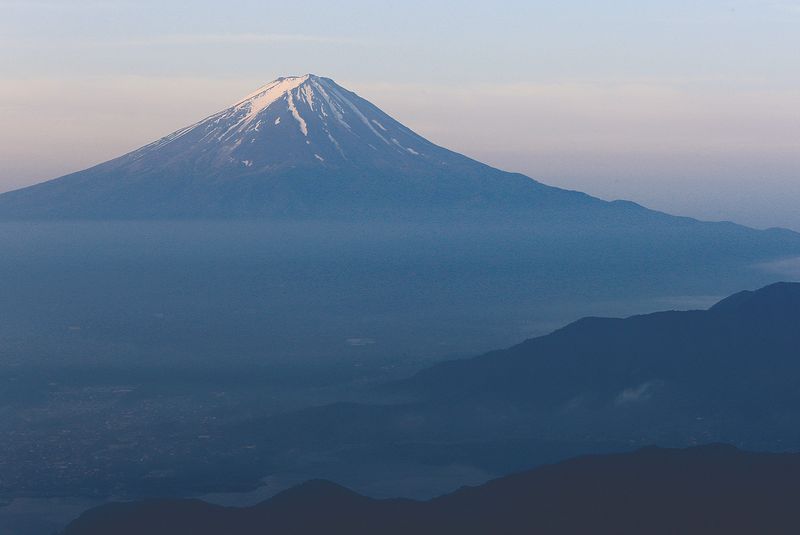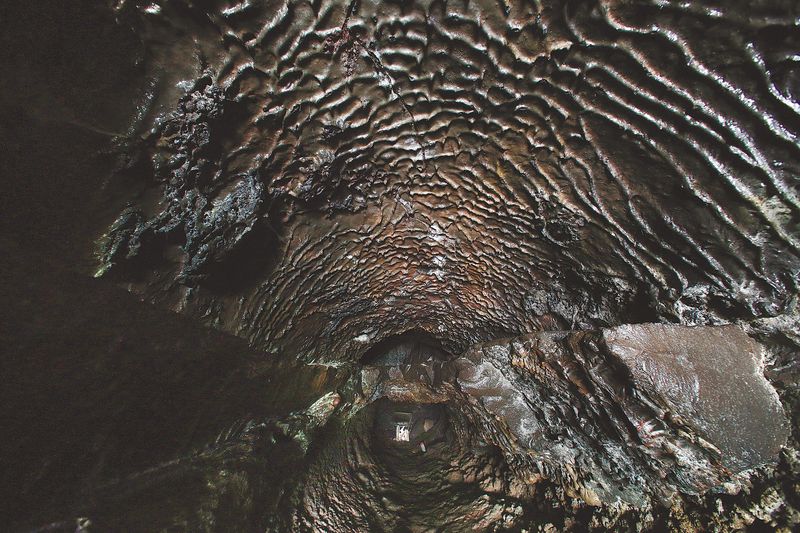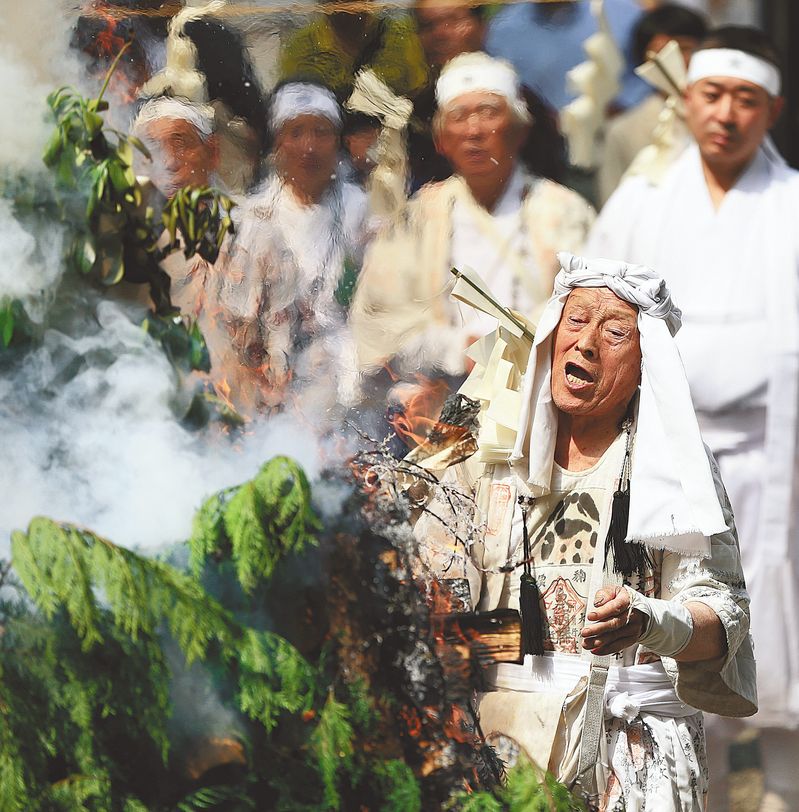
It’s a very auspicious Summer Solstice this year, for Mt Fuji is poised on the very brink of World Heritage registration, with the relevant Unesco members gathered in Cambodia and ready at any moment to give it the nod. It’s not being registered as a Natural Heritage, because of the various environmental problems, but as a Cultural Landscape based on its long tradition as a sacred mountain and for the inspiration it has provided for artistic expression. In this respect, the Japan News (former Daily Yomiuri) has an interesting article today looking into the small Fuji-ko sect.
************************************************************************************
Daisuke Tomita / Yomiuri Shimbun Photographer (credited for all photos on this page)
FUJI-YOSHIDA, Yamanashi–
In early June, people dressed in white religious garb gathered at a shrine located at the northern foot of Mt. Fuji.
They are ascetic devotees belonging to one of Fujiko groups—religious associations that worship Mt. Fuji. In front of them was a bonfire, and the devotees began putting boards, called saiboku, into the fire one after another.
On the saiboku, people’s wishes for good health and business success were written. It was a holy ritual to relay people’s wishes to the god of the mountain. The saiboku burned instantly and smoke soared into the sky.
Then a man facing the bonfire began chanting the mantras of his Fujiko group. Hot air blew toward him, but Yoshitsugu Saito continued his sonorous chants.
Saito, 82, joined the group about 60 years ago after being seriously injured in an accident. Since then, he has undertaken various ascetic practices and maintained a clean-living lifestyle, which is a tenet of Fujiko associations. He has visited Mt. Fuji numerous times from his home in Kanagawa Prefecture, and he has climbed the mountain–from the base to the summit–nearly 50 times.

Inside one of the caves of Mt Fuji - returning to the womb of mother Earth
Mt. Fuji is expected to be officially registered as a World Heritage site at the UNESCO’s World Heritage Committee meeting in Phnom Penh. The meeting began on June 16 and will be held until Thursday.
Mt. Fuji has been recognized for its cultural value as a holy mountain worshiped by people since ancient times. Its constituent property includes the five lakes around its base and the surrounding shrines, caves and trails.
One day, Emiko Ozawa sent off ascetic devotees from her lodge near Mt. Fuji. Ozawa, 68, gracefully knelt at the entrance and placed her hands on the floor. “We wish you a safe journey,” she said. The Zuzuya lodge has a history of more than 400 years. The lodge is one of the “Oshi-no Ie” lodges, where ascetic devotees learn the principles of Fujiko and receive instruction on safe climbing. The lodge also serves food to visitors.
During the Edo period (1603-1867), the current Fuji-Yoshida area was flooded with ascetic devotees and there were more than 80 such lodges. However, only a handful of them remain today.
Ozawa’s son and the 20th generation master of Zuzuya, Terunobu, 38, said: “I’m resolved to maintain the culture [of Oshi-no Ie] as long as ascetic devotees visit our lodge.”
I had an opportunity to enter Yoshida Tainai Jukei, a cave created by a large eruption of Mt. Fuji in 864. It was a narrow and damp cave that I could only enter by crouching.
The cave is known as a sacred place and carefully protected by local residents. There is a small shrine at the back of the cave and in the past, ascetic devotees entered the cave to “purify” themselves before climbing Mt. Fuji.
After visiting, I felt as if I could sense the breath of the people who offered prayers to Mt. Fuji.


Leave a Reply